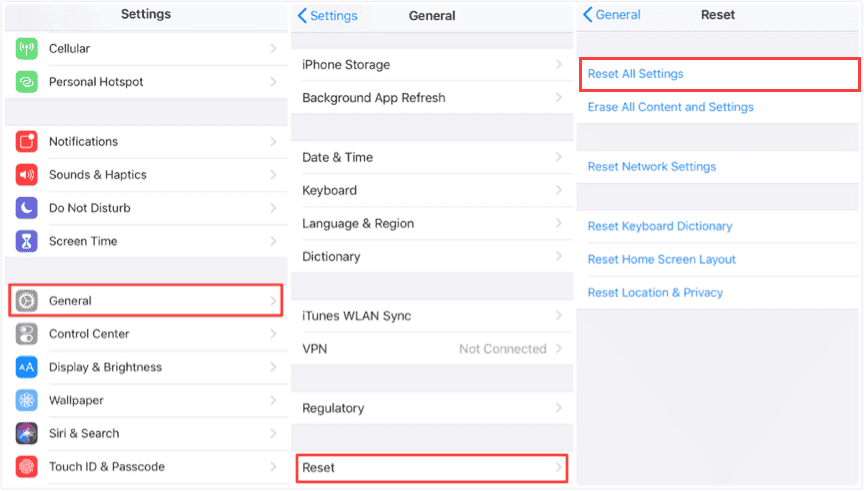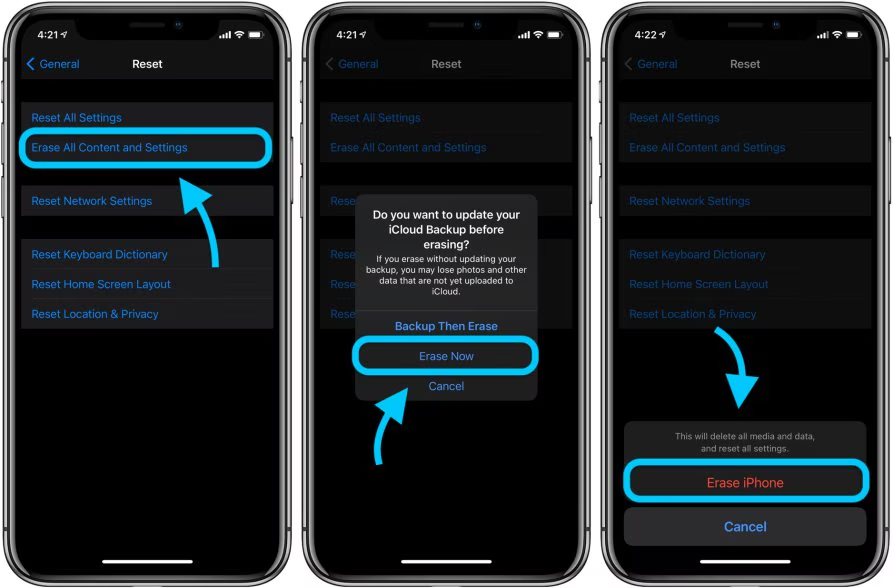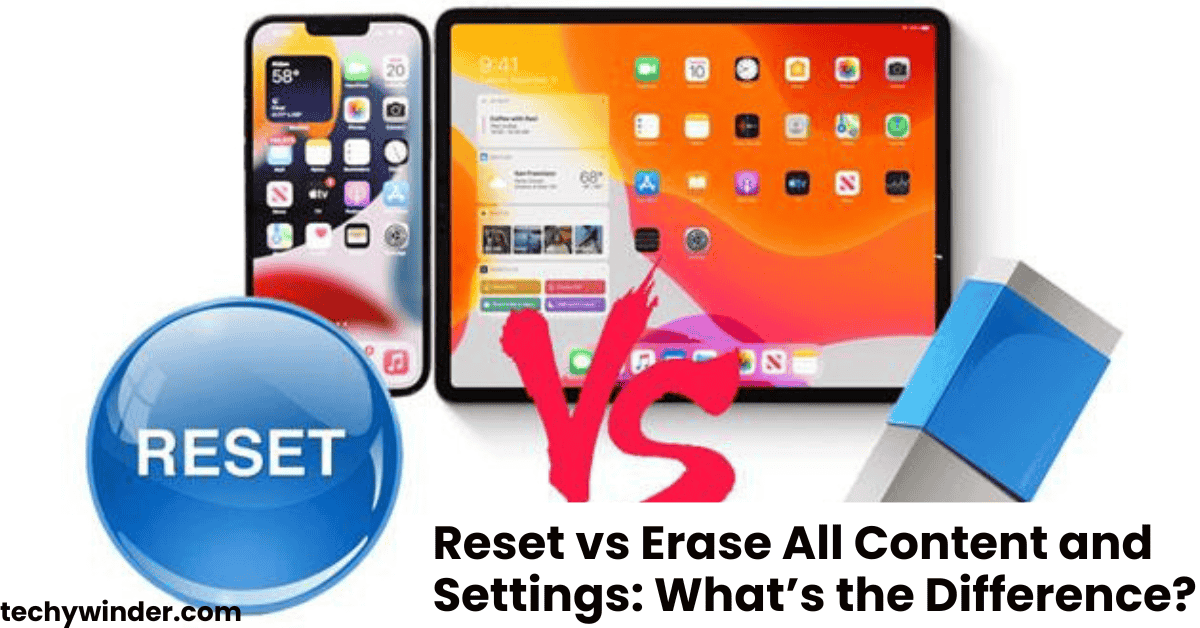If you’ve ever needed to troubleshoot your iPhone or iPad, you may have come across the options “Reset All Settings” and “Erase All Content and Settings” under the device’s settings. But what’s the difference between the two?
Many users hesitate before making a selection, worried they might lose important data or make irreversible changes. This guide will explain reset vs erase all content and settings, helping you choose the best option for your needs.
Reset vs Erase All Content and Settings – The Key Difference
While both options restore parts of your iPhone to factory settings, they serve very different purposes.
📌 Main Difference:
✔ Reset All Settings – Restores default system settings without deleting personal data.
✔ Erase All Content and Settings – Completely wipes the device, removing all data, settings, and content.
💡 Key takeaway: Resetting is useful for fixing minor issues, while erasing is used when selling, trading, or fully resetting your device.
What Does “Reset All Settings” Do?
“Reset All Settings” is a safe option if you’re experiencing glitches or system issues without wanting to delete your files.
📌 What happens when you reset all settings?
✔ Restores default system settings (Wi-Fi, Bluetooth, display preferences, notifications, etc.).
✔ Removes saved Wi-Fi networks and passwords.
✔ Disables Face ID/Touch ID and Apple Pay (but keeps your data).
✔ Clears keyboard preferences, privacy settings, and location settings.
✔ Does not delete apps, photos, messages, or any personal data.
💡 When to Use Reset All Settings:
✔ If your iPhone is lagging or glitching.
✔ If your Wi-Fi or Bluetooth isn’t working properly.
✔ If you’ve changed multiple settings and want to restore defaults.
What Does “Erase All Content and Settings” Do?
This option completely wipes your iPhone or iPad, restoring it to factory settings—just like when it was brand new.
📌 What happens when you erase all content and settings?
✔ Deletes all personal data (photos, apps, messages, contacts, etc.).
✔ Removes all saved accounts and passwords.
✔ Wipes Wi-Fi settings, privacy preferences, and Apple Pay details.
✔ Signs you out of iCloud and Apple ID (if Find My iPhone is turned off).
✔ Restores default system settings and erases all installed apps.
💡 When to Use Erase All Content and Settings:
✔ If you’re selling or giving away your device.
✔ If you’re experiencing major software issues.
✔ If you want to start fresh with a clean iPhone.
⚠ Important: Always back up your data before using this option to avoid losing important files.
Reset vs Erase All Content and Settings: Which One Should You Choose?
If you’re unsure which option to use, here’s a quick guide:
| Situation | Best Option |
|---|---|
| iPhone is slow, glitching, or experiencing minor issues | Reset All Settings |
| Wi-Fi, Bluetooth, or network settings are not working | Reset All Settings |
| Want to remove all personal data before selling | Erase All Content and Settings |
| Need a complete factory reset | Erase All Content and Settings |
| Want to clear settings without losing data | Reset All Settings |
| iPhone has serious bugs or malware | Erase All Content and Settings |
💡 Pro Tip: If you’re resetting before selling your device, make sure Find My iPhone is disabled to prevent activation lock issues.
How to Perform a Reset or Erase on an iPhone or iPad
If you’re ready to reset or erase your device, follow these steps:
How to Reset All Settings (Without Deleting Data):
1️⃣ Open Settings > General.
2️⃣ Scroll down and tap Transfer or Reset iPhone.
3️⃣ Tap Reset > Reset All Settings.
4️⃣ Enter your passcode if prompted.
5️⃣ Confirm the reset and wait for your iPhone to restart.

How to Erase All Content and Settings (Factory Reset):
⚠ Before proceeding, back up your iPhone via iCloud or iTunes to avoid losing important data.
1️⃣ Open Settings > General.
2️⃣ Scroll down and tap Transfer or Reset iPhone.
3️⃣ Tap Erase All Content and Settings.
4️⃣ Confirm the erase and enter your Apple ID password if required.
5️⃣ Your iPhone will restart and reset to factory settings.
💡 Pro Tip: If you’re selling your iPhone, make sure to remove your Apple ID and sign out of iCloud to prevent activation lock issues.

Common Myths About Resetting and Erasing an iPhone
📌 Myth 1: Resetting All Settings Deletes Photos and Apps
❌ False! Resetting all settings only restores system preferences—it does not delete personal files.
📌 Myth 2: Erasing All Content and Settings Is Reversible
❌ False! Once you erase your device, there is no way to recover your data unless you have a backup.
📌 Myth 3: Restarting an iPhone is the Same as Resetting
❌ False! A simple restart just turns your iPhone off and on—it does not reset any settings.
📌 Myth 4: Erasing an iPhone Removes Activation Lock
❌ False! If Find My iPhone is enabled, Activation Lock remains active even after a reset.
FAQs: Resetting iPhone Settings
Final Thoughts: Reset vs Erase All Content and Settings
Understanding reset vs erase all content and settings can help you choose the best option for your situation.
💡 Key Takeaways:
✔ Reset All Settings restores default system preferences without deleting personal data.
✔ Erase All Content and Settings completely wipes your iPhone, making it like new.
✔ Always back up your data before performing a factory reset.
✔ Use resetting for troubleshooting, and erasing for selling or a fresh start.
By choosing the right option, you can fix your iPhone’s issues safely and efficiently.






